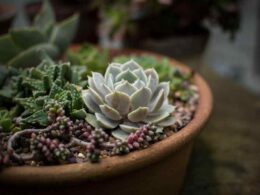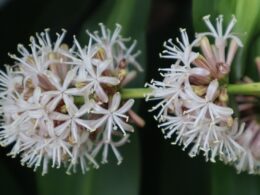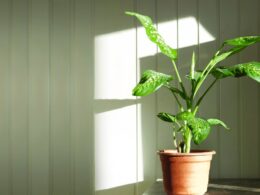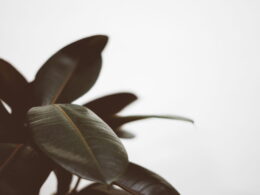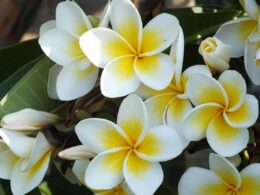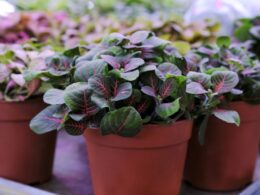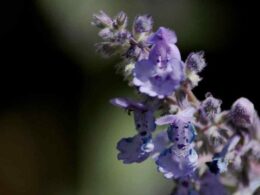What Is an Elephant Ear Plant? Species, Origins and Appearance
The name ‘elephant ear’ refers to several tropical perennials that belong to the Araceae family. There are two main genera of these plants: Colocasia and Alocasia. The former is native to southeastern Asia and India, while the latter originates from tropical and subtropical Asia and Eastern Australia. So, elephant ear plant care indoors will involve creating a tropical-like environment.
Some species cultivated as ornamental plants are:
- Colocasia esculenta (taro);
- Alocasia × amazonica;
- Alocasia nycteris (batwing alocasia).
Elephant ear plants get their name from their large, heart-shaped leaves which can grow up to 3-5 feet long! The leaves can be either green or variegated, with some species having colorful stems. These plants typically flower in the summer, producing small white blooms.
Elephant Ear Plant Care Indoors – Soil Type and Fertilizer
Now that we know a little about them, let’s get started with elephant ear plant care indoors. These plants prefer fertile, loamy soil that’s slightly acidic (pH 5.5 to 7.0). A potting mix for tropical plants or African violets will work.
Like many tropical plants, elephant ears are heavy feeders. Be sure to fertilize your colocasia or alocasia plant every 2-3 weeks during the growing season with a water-soluble, high-nitrogen fertilizer.
Elephant Ear Plant Care Indoors – Watering
Another important aspect of elephant ear plant care indoors is watering. These plants like to be kept moist at all times. They don’t mind soggy soil, as they’re native to wetlands. It’s best to water them as soon as the soil starts to dry out slightly – even if that means twice a day.
How Much Light Elephant Ear Plants Need
Elephant ears need bright, indirect sunlight or partial shade to grow well. The darker their leaves, the more sun they’ll need to maintain their color. If your plant is getting too little sun, the leaves will start to fade or turn yellow.
Ideal Temperatures and Humidity for Elephant Ear Plants
These plants are tropical perennials that need warm temperatures to thrive indoors. They prefer average room temperatures of 70-85 °F during the day and above 60 °F at night. If the temperature drops below 60 °F, the plant will go dormant – it will stop growing and producing leaves.
Elephant ears also need high humidity to grow well. If the air in your home is too dry, the leaves will start to brown and curl at the edges. To increase the humidity around your plant, you can:
- mist it with water every day;
- put it on a pebble tray filled with water;
- use a humidifier.
Pruning Elephant Ear Plants
Pruning isn’t a necessary part of elephant ear plant care indoors, except to remove any dead or dying leaves. If you left them on the plant, they’d quickly rot because of all the surrounding moisture.
If you want to encourage bushy growth, you can also pinch the tips of the stems. This will cause the plant to branch out and become fuller.
How to Propagate Elephant Ear Plants
Elephant ear plants can be propagated by division. This is best done in the fall, at the end of the growing season. Use a sharp knife to carefully divide their bulbs, corms or tubers (depending on the species) into smaller pieces, making sure each piece has at least one growth node.
Allow the divisions to dry and heal for a week, out of direct sun. Then, plant them about 4 inches deep in separate pots filled with moist soil. If you’re going to plant them outdoors, store the tubers in a cool and dry place until late spring before planting.
Repotting Elephant Ear Plants
Your elephant ear plant will need to be repotted when it outgrows its current pot. This is usually every two to three years. When repotting elephant ears, be careful not to damage their fragile roots. Gently loosen the soil around the plant before carefully lifting it out of its pot.
Choose a pot that’s only one size larger than the current one – elephant ear plants don’t need a lot of root space. However, they may benefit from a larger pot if you think that the soil dries out too quickly.
Common Pests and Diseases of Elephant Ear Plants
These indoor plants are relatively resistant to pests and diseases. If you follow our tips for elephant ear plant care indoors, you shouldn’t encounter any problems. After all, a well-cared-for plant can take care of itself!
However, they can be susceptible to fungal diseases if the leaves stay too wet. If you notice any brown spots or yellowing leaves, remove them from the plant immediately.
You may also see occasional aphids, mealybugs, or whiteflies on your elephant ear plant, especially if you’re growing it outdoors in summer. These can be controlled with insecticidal soap or neem oil.
Elephant Ear Plant Toxicity
One thing to keep in mind is that elephant ear plants are poisonous to humans and pets if ingested. They contain calcium oxalates, which causes burning and irritation in the mouth and throat. If you have small children or pets, it’s best to keep them away from elephant ears.
Ready to Take Care of an Elephant Ear Plant?
And there you have it – everything you need to know about elephant ear plant care indoors. These plants are relatively easy to take care of, as long as you give them the right amount of water and light. With a little effort, you can enjoy their lush foliage all year round!
Do you have an elephant ear plant at home? What species is it? Share your tips for taking care of it!









